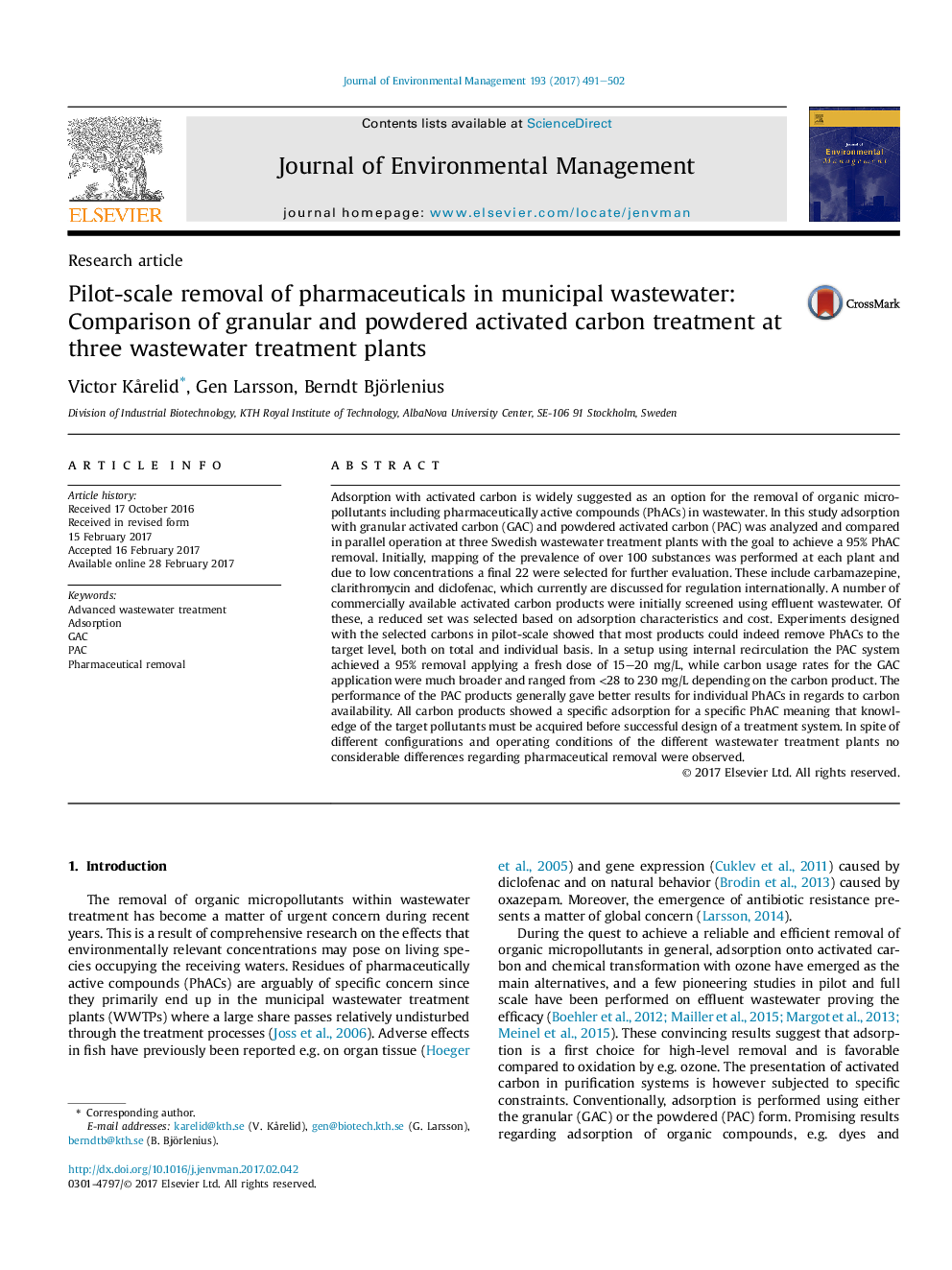| Article ID | Journal | Published Year | Pages | File Type |
|---|---|---|---|---|
| 5116852 | Journal of Environmental Management | 2017 | 12 Pages |
â¢Granular and powdered activated carbon removed 95% of pharmaceuticals in wastewater.â¢Adsorption was largely unaffected by conditions specific to the different plants.â¢Lower carbon usage rate was generally observed for powdered activated carbon.â¢Granular activated carbons showed large variation in adsorption capacity.
Adsorption with activated carbon is widely suggested as an option for the removal of organic micropollutants including pharmaceutically active compounds (PhACs) in wastewater. In this study adsorption with granular activated carbon (GAC) and powdered activated carbon (PAC) was analyzed and compared in parallel operation at three Swedish wastewater treatment plants with the goal to achieve a 95% PhAC removal. Initially, mapping of the prevalence of over 100 substances was performed at each plant and due to low concentrations a final 22 were selected for further evaluation. These include carbamazepine, clarithromycin and diclofenac, which currently are discussed for regulation internationally. A number of commercially available activated carbon products were initially screened using effluent wastewater. Of these, a reduced set was selected based on adsorption characteristics and cost. Experiments designed with the selected carbons in pilot-scale showed that most products could indeed remove PhACs to the target level, both on total and individual basis. In a setup using internal recirculation the PAC system achieved a 95% removal applying a fresh dose of 15-20Â mg/L, while carbon usage rates for the GAC application were much broader and ranged from <28 to 230Â mg/L depending on the carbon product. The performance of the PAC products generally gave better results for individual PhACs in regards to carbon availability. All carbon products showed a specific adsorption for a specific PhAC meaning that knowledge of the target pollutants must be acquired before successful design of a treatment system. In spite of different configurations and operating conditions of the different wastewater treatment plants no considerable differences regarding pharmaceutical removal were observed.
